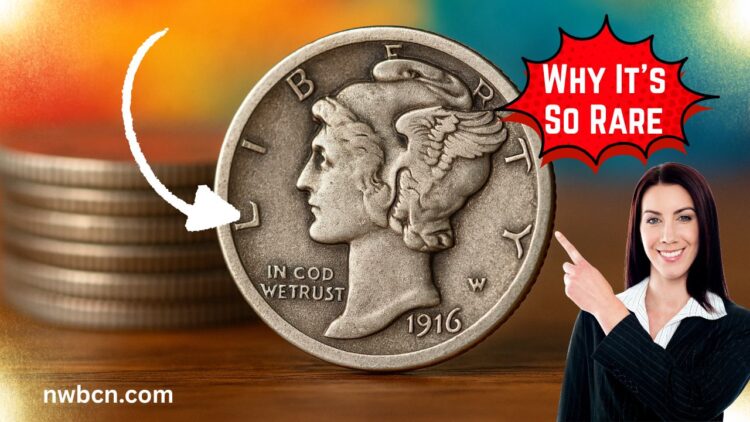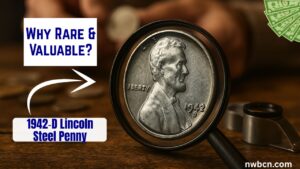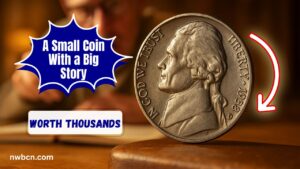In 1916, the U.S. Mint unveiled the Mercury Dime—actually the Winged Liberty Head Dime, designed by Adolph A. Weinman. Among these, the 1916-D dime, struck at the Denver Mint, stands out as the key date in the series. With only 264,000 pieces minted, it remains one of the rarest and most coveted U.S. circulation coins of the 20th century.
Collectors are drawn to the 1916-D because of:
- Ultra-low mintage
- Low survival rate, especially in high condition grades
- Presence of the Full Bands (FB) designation
- Its status as a foundational challenge coin in 20th-century collections
A Rarity Rooted in Numbers
- Total Mercury Dimes in 1916: over 22 million, including Philadelphia and San Francisco mints.
- Denver output: a mere 264,000 coins—the lowest mintage in the entire Mercury series.
- Why so few?: Denver shifted most production capacity to quarters in late 1916, sidelining dimes.
Of these limited issues, only a small portion survived, and even fewer in good condition—making the 1916-D Mercury Dime a cornerstone of key-date collections.
What Makes it So Valuable Today?
| Condition Grade | Approx. Survival | Estimated Value (USD) per PCGS |
|---|---|---|
| G4 (Good) | Common | $1,500 |
| F12 (Fine) | Scarce | $3,750 |
| XF40 (Extremely Fine) | Scarce | $8,500 |
| MS60–MS62 (Unc) | Rare | $15,000–$25,000 |
| MS63 | Very Rare | $22,500 |
| MS64 Full Bands | Ultra Rare | $37,500–$152,000+ |
- Circulated examples start at $1,500.
- Mint state (MS60–62) coins fetch above $20,000.
- Full Bands (FB) varieties command hundreds of thousands, particularly in grades MS64 or higher.
The “Full Bands” Factor
- Located on the reverse, the central bundle’s three bands should be fully separate and sharply struck to qualify as FB.
- This full-band feature dramatically raises rarity and demand.
- Sales record:
- An MS61 FB sold for $20,400 in 2024.
- An MS67 FB example reached $152,000+ at auction.
Why the 1916-D Became a Key Date
- First-year issue: Mercury dimes debuted in late 1916, replacing the Barber series.
- Low mintage and survival: Denver’s minimal production meant far fewer coins available to collectors later.
- Collector awakening: Coin boards in the 1930s and ‘40s highlighted its scarcity.
- Striking design: Weinman’s symbolically rich Liberty portrait continues to captivate.
Key Details of Design & Composition
- Obverse: Liberty wearing a Phrygian cap with wings, representing freedom of thought.
- Reverse: Fasces (bundle and axe) symbolizing unity and strength, accompanied by an olive branch for peace.
- Composition: 90% silver, 10% copper; weighing 2.5 grams with a diameter of 17.91 mm.
- Designer: Adolph A. Weinman, renowned for merging artistry with symbolism.
Die Varieties: Vertical “D” vs Horizontal “D”
- The Denver mint mark on these dimes exists in two styles:
- Vertical D: Earlier die
- Horizontal D: Slightly later die, considered even rarer.
- Identifying mint-mark orientation is key for advanced collectors and can affect value.
1916-D Mercury Dime At-A-Glance
| Attribute | Details |
|---|---|
| Mintage | 264,000 (Denver — lowest in series) |
| Composition | 90% Silver, 10% Copper (2.5g; 17.91 mm) |
| Designer | Adolph A. Weinman |
| Mint Mark Varieties | Vertical D, Horizontal D |
| Full Bands (FB) | Separated bands on fasces; Full Bands = very rare |
| Surviving Estimates | ~10,000 examples total |
| Value Range | $1,500 (G4) to $150,000+ (MS67 FB) |
Market Trends & Authentication
- PCGS and NGC-graded MS60+ coins form the bulk of auction specimens; FB examples are rare and command high premiums .
- Counterfeit risk: As values climb, risk grows—collect only graded coins from reputable sources.
- Registry set popularity: The 1916-D remains a foundation piece for top-tier Mercury Dime sets.
Collector’s Guide to Acquisition
- Buy certified examples—preferably with PCGS or NGC Full-Bands attribution.
- Check mint-mark orientation (Vertical vs. Horizontal “D”).
- Verify Full Bands by inspecting band separation on fasces.
- Prioritize eye appeal—toning, strike sharpness, and surface condition matter.
- Track market activity—notable auctions in 2024 and 2025 illustrate strong demand.
The 1916-D Mercury Dime is more than a rare coin—it’s a defining symbol of American numismatics: a first-year key date, dramatically low mintage, and rich design, crowned by the coveted Full Bands variant.
With prices now reaching six figures, it represents a once-in-a-lifetime opportunity for serious collectors. As its legend continues to grow, the 1916-D stands firm as one of the most sought-after treasures in U.S. coin collecting.
FAQs
Q1: What does “Full Bands” mean on a Mercury Dime?
It means the three horizontal bands on the fasces are sharply separated—a sign of ideal strike quality and high collector value.
Q2: How many 1916-D dimes still exist?
Numismatic estimates place surviving examples around 10,000, mostly in circulated grades.
Q3: Which mint-mark variety is rarer: Vertical D or Horizontal D?
The Horizontal D is slightly scarcer; collectors should review certified specimens and die variety guides for accurate identification




